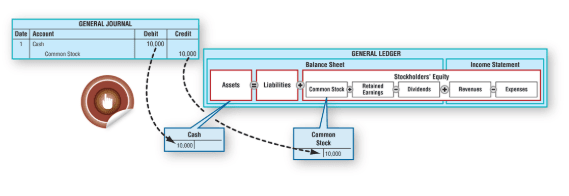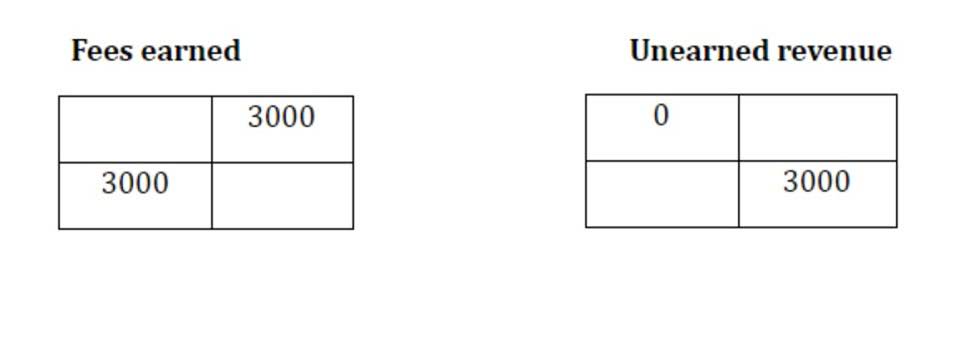One of the main financial statements is the balance sheet (also known as the statement of financial position). In accounting parlance the term Retained earnings means an account to which the surplus of Income over expense (Credit) or vice versa (Debit) is carried over. An alternative to the statement of retained earnings is the statement of stockholders’ equity.
How to Calculate the Effect of a Stock Dividend on Retained Earnings?
The beginning period retained earnings appear on the previous year’s balance sheet under the shareholder’s equity section. The beginning period retained earnings are thus the retained earnings of the previous year. Dividends are paid out of retained earnings of the company, and using both cash and stock dividends can lead to a decrease in the retained earnings of the company. When an account has a balance that is opposite the expected normal balance of that account, the account is said to have an abnormal balance.
Mastering Financial Statements
The Retained Earnings account is credited to reflect the addition of the net income for the year. Retained earnings are the percentages of a business’s profits that can be retained but are reinvested in the business instead. Double Entry Bookkeeping is here to provide you with free online information to help you learn and understand bookkeeping and introductory accounting. Retained earnings are therefore an accounting entry which acts as a reserve for unallocated earnings, pending arbitration. Find out how it sheds light on your company’s financial management, with a case virtual accountant study to illustrate.
Journal Entries for Retained Earnings
- By starting each year with zero balances, the income statement accounts will be accumulating and reporting only the company’s revenues, expenses, gains, and losses occurring during the new year.
- In order for the company’s financial books to balance, when a debit is made to the retained earnings account, a corresponding credit has to be made to another account.
- The Retained Earnings account is credited to reflect the addition of the net income for the year.
- Instead, if a company’s success is to be analyzed, the various income statement ratios or business valuation methods could be used.
- Since cash dividends result in an outflow of cash, the cash account on the asset side of the balance sheet will get reduced by $100,000.
- If for instance, the company incurred losses of $100,000 the journal entry for the loss will be recorded as shown below.
For example, a loan contract may state that part of a corporation’s $100,000 of retained earnings is not available for cash bookkeeping dividends until the loan is paid. Understanding these principles requires knowing the normal balance of each account type. Asset accounts typically carry a debit balance, meaning they increase with debits and decrease with credits.
What is a statement of retained earnings?
- At the end of each accounting period, businesses close out their revenue and expense accounts, summarizing them into a temporary account known as the Income Summary Account.
- It is important to note that the retained earnings amount can be negative, this happens when companies have net losses or payout dividends more than what is in the retained earnings account.
- Distinguishing between capital expenditures and operating expenses influences asset capitalization and expense deduction timing.
- So for example there are contra expense accounts such as purchase returns, contra revenue accounts such as sales returns and contra asset accounts such as accumulated depreciation.
- A business entity can have a negative retained earnings balance if it has been incurring net losses or distributing more dividends than what is there in the retained earnings account over the years.
- Whatever amount of the profits that is not paid out to shareholders is deemed retained earnings.
If a credit is made to the retained earnings account, a corresponding debit has to be made to another account. According to FASB Statement No. 16, prior period adjustments consist almost entirely of corrections of errors in previously published financial statements. Corrections of abnormal, nonrecurring errors that may have been caused by the improper use of an accounting principle or by mathematical mistakes are prior period adjustments. retained earnings normal balance Normal, recurring corrections and adjustments, which follow inevitably from the use of estimates in accounting practice, are not treated as prior period adjustments. Also, mistakes corrected in the same year they occur are not prior period adjustments.
- For example, a loan contract may state that part of a corporation’s $100,000 of retained earnings is not available for cash dividends until the loan is paid.
- Cash dividends represent a distribution of the company’s earnings to its shareholders and are usually dividends paid out quarterly.
- To summarise, the total market value of the company should not change, but what should change is the per-share market value, which will decrease.
- In other words, the permanent accounts are the accounts used to record and store a company’s amounts from transactions involving assets, liabilities, and owner’s (stockholders’) equity.
- There can be cases where a company may have a negative retained earnings balance.
- The amount of a corporation’s retained earnings is reported as a separate line within the stockholders’ equity section of the balance sheet.
Formats of the Balance Sheet and Accounting Equation
These earnings could be used to fund an expansion or pay dividends to shareholders at a later date. Retained earnings are related to net income because they increase or decrease depending on whether a company has a net income or net loss for the year. Liability accounts represent obligations a company must settle in the future, such as accounts payable, short-term debt, and bonds payable. Recognizing current liabilities—due within a year—and long-term liabilities, which extend beyond a year, is essential. Current liabilities typically include accounts payable, short-term debt, and accrued expenses, whereas long-term liabilities might encompass bonds payable or long-term lease obligations.
An entry in the credit column is used to reduce an asset or increase a liability. For example, to record a $1,000 withdrawal from retained earnings, $1,000 is entered in the debit column for the drawing account and $1,000 in the credit column for the cash account. At the end of an accounting period, money from net income is transferred to the retained earnings account. At some point, an owner will need to withdraw funds from the business for personal use. This must be documented correctly to have the proper amount listed in retained earnings and in the cash account. This process can vary depending on whether the company is a corporation or a sole proprietorship.






